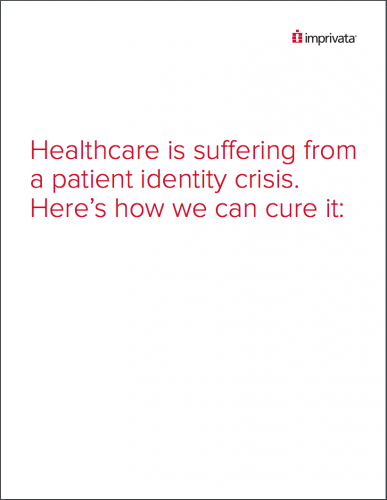Impact of positive patient identification
But manual patient identification commonly used as the first step in the care delivery process is often riddled with errors and issues that contribute to increasing medical identity theft, as the Wall Street Journal wrote earlier this month.
Moreover, on average, there is up to a 10 percent misidentification error rate during medical record searches, of which, six percent result in adverse event, according to a Wall Street Journal Healthcare Report.
Positive Patient Identification Challenges
As healthcare providers are challenged to accurately identify patients and access their correct medical records, patient safety, patient engagement, and provider finances are all at risk:
- Patient safety is at the heart of these issues, as serious medical errors can occur as a direct result of misidentification or the inability to locate the correct patient record. To put this in perspective, out of every 10,000 attempts to access a patient record, 1,000 will result in a patient identification error and 60 will result in an adverse event.
- Medical identity theft and insurance fraud has increased by 22 percent from 2013 to 2014. The inability to accurately identity patients exposes providers to a greater risk of allowing fraudulent access to care.
- Establishing the positive patient identification at the beginning of the revenue cycle is critical, as failing to do so can cause delayed and denied claims by payers as well as clawbacks for insurance fraud. Industry experts report that the average estimated costs associated with duplicate medical records can be as much as $1,000 per record.
- Ultimately, the patient greatly suffers, with medical errors, redundant testing, and prolonged claims adjudication, all resulting in patient satisfaction issues and the potential to impact patient loyalty.
As ineffective manual processes create patient identification issues, new technology solutions are emerging to facilitate positive patient identification, and leading Healthcare delivery organizations are recognizing that utilizing biometric identification is a prominent option. However, in order to address patient identification errors effectively, technology solutions have to do more than simply identifying patients accurately. An effective technology solution must provide a positive patient identification process that directly integrates to providers’ existing HIS workflows and allow for a secure identification at any point of care. It must also provide extremely high levels of interoperability across multiple clinical systems, patient acceptance, and usability proven to work in Healthcare environment.
Imprivata PatientSecure is one such patient identification solution. It is a positive patient identification system that uses palm vein biometrics to create 1:1 link between a patient and multiple EMR records, accurately identity patients at any point of care and retrieve the correct patient record from multiple hospital information systems, directly from the hospital registration screen. The solution has helped healthcare delivery organizations to improve patient safety, decrease opportunities for patient identity theft and insurance fraud, drive revenue cycle efficiency, and enhance patient experience and satisfaction.
Imprivata PatientSecure is currently being used to identify more than 7 million patients across the United States. To learn more about why Imprivata PatientSecure is the positive patient identification of choice for more than 350 hospitals, please visit www.imprivata.com/imprivata-patientsecure.
Related whitepapers:


